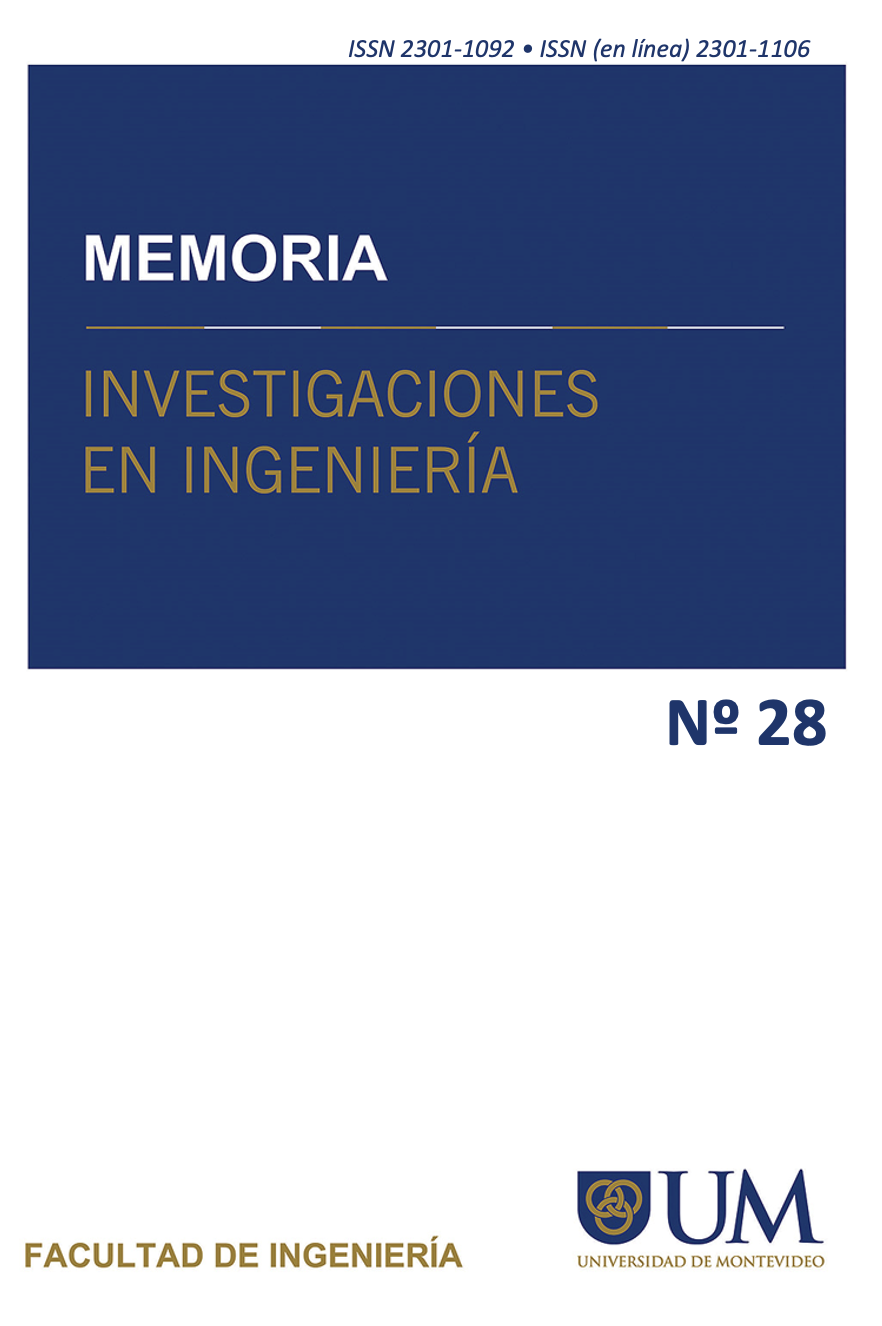Soil-structure interaction of a building with a foundation slab with the dynamic models of Barkan and Savinov, Russian Standard SNIP 2.02.05-87 and Gazetas and Mylonakis
DOI:
https://doi.org/10.36561/ING.28.10Keywords:
Barkan and Savinov dynamic ISE model, Russian standard dynamic ISE model, Gazetas and Mylonakis dynamic ISE modeAbstract
The analysis of the Soil-Structure Dynamic Interaction in the seismic response of buildings has been the subject of study in multiple investigations, highlighting its relevance in structural safety, especially in contexts of high seismicity such as Peru. Studies carried out by Villarreal (2023), Braña, Gamón, Fundora and Martínez (2022) indicate that the structural behavior of buildings can be modified by considering the soil-structure interaction in the structural analysis and modeling of buildings. By incorporating the dynamic coefficients obtained with the elastic properties of the soil stratum, it is feasible to determine if there is any significant variation in the structural behavior of the model, in this sense the present study proposes as a research objective: to determine if the incorporation of the dynamic models of soil structure interaction of Barkan & Savinov, Russian Standard SNIP 2.02.05-87 and Gazetas & Mylonakis established in the NIST GCR 12-917-21 standard, can significantly modify or influence the structural behavior of the building to be considered within the structural analysis and later in the Peruvian standard E030. The building considered for the analysis has a structural system by shear absorbent walls (high rigidity), and the foundation is uniform by means of a foundation slab of e=0.40 cm. Through the study of soil mechanics, the properties of the soil were determined, categorizing the soil as S3, with an elasticity modulus Es=1150 ton/m2 and a Poisson coefficient μ=0.30, the height of the stratum at the foundation level is 1.20 m. The building is located in a peak acceleration zone of 0.25g. Through the analysis of the results, it was demonstrated that the structure having high rigidity does not significantly modify its period, being the greatest variation of the period of 1.60% for the Barkan & Savinov model, followed by the Gazetas & Mylonakis model with 1.42%. Concerning the drifts, a significant increase was observed in the level in contact with the foundation, with an average variation of 16.56% in the most flexible XX' direction of the building, while in the most rigid direction the increase was 10.50%. The results of the drifts were verified through a time history analysis, considering the Lima Earthquake of October 1966 and its two components (EW-NS), verifying that for the EW case the increase in the drift was 16.82%, while for the NS case an increase of 16.81% was obtained, both in the XX' direction. These results led to the conclusion that there was a significant increase in lateral deformations at the level in contact with the foundation slab, while the variation in the fundamental period and shear stresses were not significant, largely due to the structural system of shear-absorbing walls, which have a higher rigidity than other construction systems.
Downloads
References
Acuña, F. & Molina, C. Efectos de la interacción suelo estructura (ISE) en una edificación de 5 pisos tipo pórtico en concreto reforzado sobre suelo blando (arcilla) típico en la ciudad de Montería – Córdoba. 2023. Revista Ciencia latina, Vol. 7 Núm. 4 (2023)
Braña, P. Gamón, R, Fundora, Nelson, & Martínez, J. Influence of Height in the Consideration of the Dynamic Soil-structure Interaction in Buildings with dual Typology Located in Areas of High SeismicHazard. Journal of earthquake engineering, 2022, vol. 26, no. 5, p. 1234-1256.
Ccorratgé, Z. Martínez, J y Cobelo, W. Influencia de la interacción dinámica suelo-estructura en el mecanismo de colapso y nivel de desempeño de edificaciones de hormigón armado. 2022. Revista de Ingeniería Sísmica, p. 41-53.
García, J. Ramsés, J. & Fernández, L. Efecto de la Interacción Suelo- Estructura en la detección de daño, usando el método de rigideces base. 2011 Sociedad Mexicana de Ingeniería Sísmica. XVIII Congreso nacional de Ingeniería Sísmica.
Morales, L. & Espinoza, A. Influencia de la interacción suelo estructura (ISE) de cimentaciones
superficiales en suelos no cohesivos en el comportamiento estructural de una edificación de 8 pisos y un subsuelo. 2020. Revista Ingenio, N.º 1 vol. 3 (2020)
MVCS (Ministerio de Vivienda, Construcción y Saneamiento). Norma E020. Cargas. Lima - Perú
MVCS (Ministerio de Vivienda, Construcción y Saneamiento). Norma E030. Diseño Sismorresistente. Lima - Perú.
MVCS (Ministerio de Vivienda, Construcción y Saneamiento). Norma E060. Concreto Armado. Lima - Perú.
NIST GCR 12-917-21. Soil-Structure Interaction for Building Structures. 2012, National Institute of Standards and Technology Engineering Laboratpory Gaithersburg. California, USA.
Tena, A. Interacción suelo-estructura: reflexiones sobre su importancia en la respuesta dinámica de estructuras durante sismos. Revista Internacional de Ingeniería de Estructuras, 2019, Vol. 24, Nro. 2, p. 141-165.
Obinna, U. Modelling of Soil- Structure Interaction. 2022, Structville Integrated Services Limited. USA. https://structville.com/2022/03/modelling-of-soil-structure-interaction.html#google_vignette
Villarreal, G. Interacción Sísmica Suelo-Estructura en Edificaciones con Plateas de cimentación. 2017, Primera edición. Lima, Perú.
Villarreal, G. Soil-Structure Interaction in Buildings. 2023, Revista Internacional de Ingeniería de Estructuras. Vol. 28, 2, 103-125(2023)
Villarreal, G. Interacción Sísmica Suelo-Estructura en Edificaciones con zapatas aisladas. 2009, Primera edición. Lima, Perú.
Villarreal, G. & Aguila, C. Soil-structure interaction and its influence on the seismic response of rc buildings. Revista Internacional de Ingeniería de Estructuras, 2021, vol. 14, no. 2, p. 55-73.























